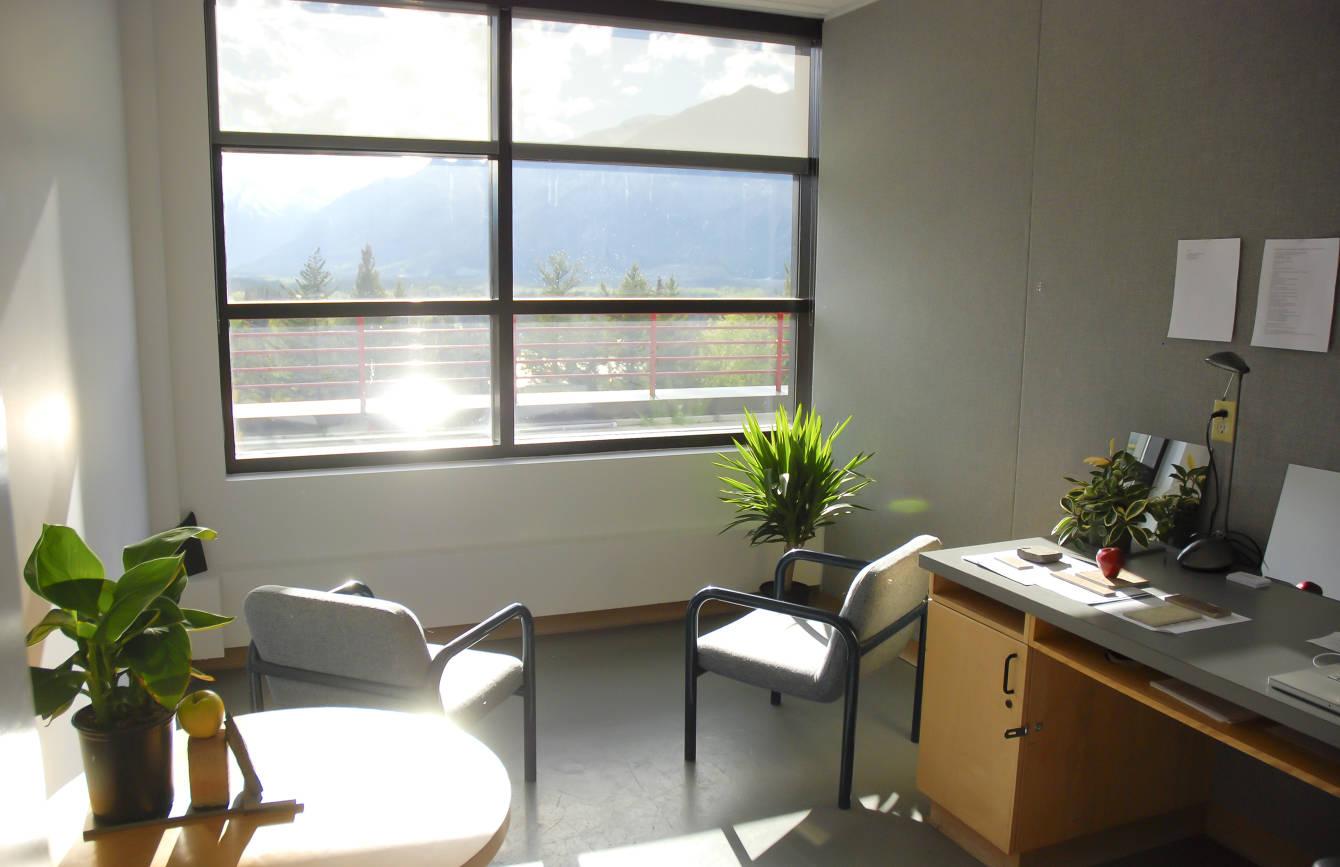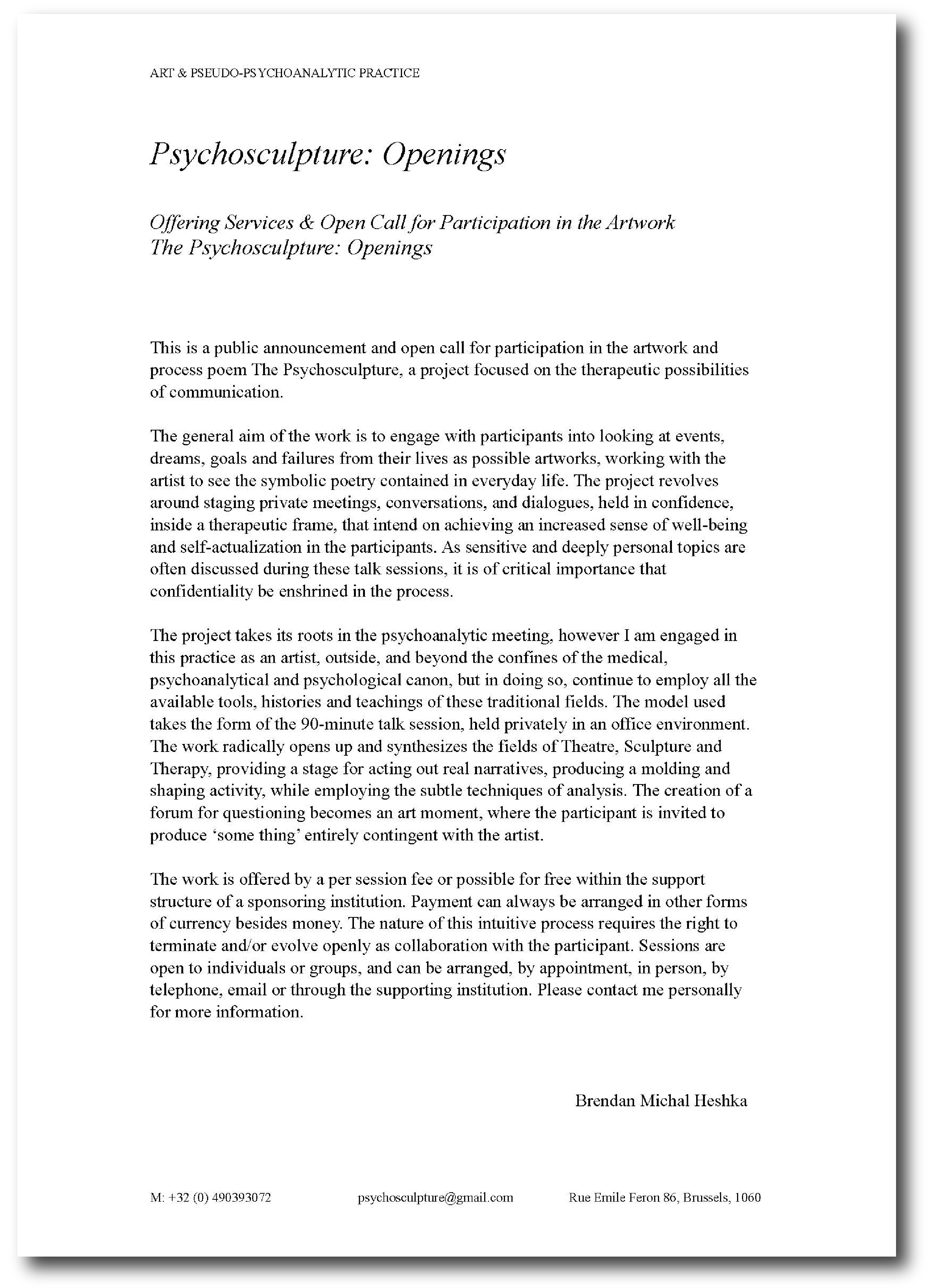The Psychosculpture
Art as the Domesticated Symptom of the Speaking Self: Work from between the Ego and the I
The Psychosculpture begins with a reformulation of the Duchampian act of bringing non art into art, in this case, the readymade bicycle wheel is psychoanalysis. Appropriating psychoanalytic therapy as I know it and practicing it in the field of art by offering talk therapy sessions, experimenting on the performativity of intimate spaces and making open ended objects and images that both stem from and feed into the work, in whatever way that they can, as decor, as prop art, as stage sets, as tools, and as the symptoms that hold the keys to discovering. The Psychosculpture provides a platform to manifest one’s symptoms as artworks, with deposits of meaning that slowly reveal the signs of that which makes the self the self. The work could be positioned in the “what if” of history located at the juncture of Surrealism with Lacanian Psychoanalysis, I propose myself as the Surrealist artist that got up off the couch to practice from the position of the Freudian chair that so shaped a generation of art. The work is founded in practicing the performative process between art and psychoanalysis made public through exhibition making, performance and writing.

What can contemporary art do in psychoanalysis and contemporary psychoanalysis do in art?
This research is located between Art and Psychoanalysis, taking its beginning in intersection, the first juncture of Arts coming together with Psychiatry, historically exemplified by the movement of Surrealism. In the 1920’s the philosophies and discoveries of Freudian Psychoanalysis, its system of consciousness and mental processes, became the single most influent feature in the avant-garde of art making across genres for decades. Simultaneously the field of Psychoanalysis comes into contact with Art and it has instrumental effect on a young Jacques Lacan who works to synthesize a contemporary psychoanalytic theory from three areas of knowledge within his heavily divided field: clinical psychiatry, the teachings of Freud, and the second phase of surrealism.
These artists and writers, known as the Surrealists, approached psychiatry’s study of our Mental Constitution and Health from a philosophical, literary, formalist and aesthete perspective. This group did not concern itself with any acceptance under the hegemony of the established scientific approach of the psychopathologists and their biological genetics, nor did it care to stay true to the strict Freudian proposals initially put forward by psychoanalysis’s singular master, rather the artists self-regulated their own space alongside, much in the same way that the psychoanalysts themselves wished to, free from the mockery and discreditation as non-scientific jargon.
The Surrealists, informed by philosophy, poetry, French literature and concepts like Hegel’s Beautiful Soul, and Flaubert’s Boveryism accepted madness as a form of clairvoyance and celebrated their consciousness-ness’s ability to truly show itself as an artist. Declaring that psychology did not belong exclusively to doctors.
This research is located between Art and Psychoanalysis, taking its beginning in intersection, the first juncture of Arts coming together with Psychiatry, historically exemplified by the movement of Surrealism. In the 1920’s the philosophies and discoveries of Freudian Psychoanalysis, its system of consciousness and mental processes, became the single most influent feature in the avant-garde of art making across genres for decades. Simultaneously the field of Psychoanalysis comes into contact with Art and it has instrumental effect on a young Jacques Lacan who works to synthesize a contemporary psychoanalytic theory from three areas of knowledge within his heavily divided field: clinical psychiatry, the teachings of Freud, and the second phase of surrealism.
These artists and writers, known as the Surrealists, approached psychiatry’s study of our Mental Constitution and Health from a philosophical, literary, formalist and aesthete perspective. This group did not concern itself with any acceptance under the hegemony of the established scientific approach of the psychopathologists and their biological genetics, nor did it care to stay true to the strict Freudian proposals initially put forward by psychoanalysis’s singular master, rather the artists self-regulated their own space alongside, much in the same way that the psychoanalysts themselves wished to, free from the mockery and discreditation as non-scientific jargon.
The Surrealists, informed by philosophy, poetry, French literature and concepts like Hegel’s Beautiful Soul, and Flaubert’s Boveryism accepted madness as a form of clairvoyance and celebrated their consciousness-ness’s ability to truly show itself as an artist. Declaring that psychology did not belong exclusively to doctors.

The fact that the two fields, the era’s contemporary art and psychoanalysis, needed, used, and fed back into each other is instrumental. Lacan found the inspiration to re-orient a new venture of contemporary psychoanalysis by boldly appropriating from unlimited cross disciplinary knowledge, while the artist avant-garde was now fueled with the subject matter, material, and new processes to produce curative and conceptual art works for a generation called Surrealism. The exchange is illustrated by such gestures such as Lacan using Dali’s novel theories of a Paranoiac Critical Method to invalidate the classical psychiatric idea of paranoia. And the surrealists using the couches of the psychoanalysts, with results of course not limited to their work.


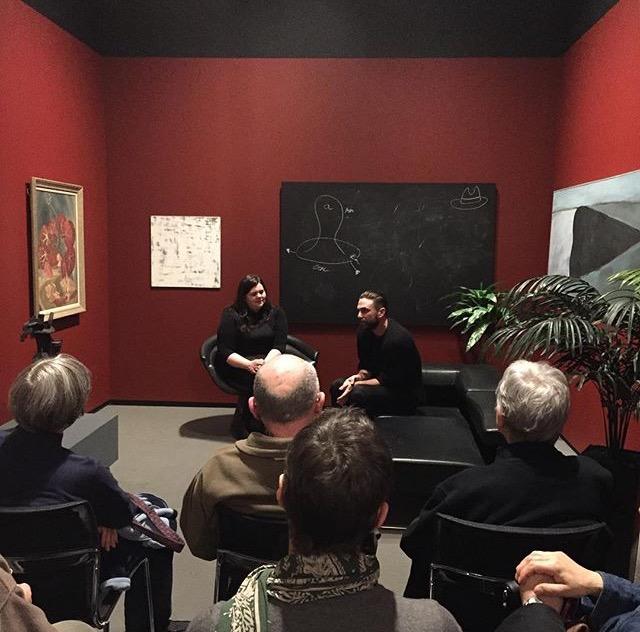

What if my colleague avant-gardes hadn’t kept their work with psychoanalysis confined to the couch, limited to the theoretical, and kept their productive creative techniques, and their curative processes for themselves, but would have applied their same perspective of psychoanalysis in the performative from the position of the chair. Who of these celebrated historical figures got off the couch to apply their knowledge of practice, to practice of psychoanalysis? None. A proposition with especially compelling potentials in the clinical sense.
Inserting myself into this narrative, with a decade of practice and theory, from the perspective of a post post-conceptual artist-surrealist, in the role of dilettante analyst/therapist practicing the performative process between art and psychoanalysis made public through exhibition making, performance and writing.
Beginning at the end of Lacanian analysis, the work takes revisiting and reevaluating the position of psychoanalysis one step further in its lineage. The Psychosculpture employs the Lacanian trick of using psychoanalysis very practice of “opening” to open itself. The practice of smashing together psychoanalysis with art, sculpture and theater ultimately produces something new. By implementing the skeletal vertebrae of the aforementioned disciplines, they are emptied out and their fundamental workings are exposed, performing a pseudo-deconstruction so that a re-re-construction may be performed. I am essentially locating myself in the same void as that of Lacan, a constitutive void before reconstruction, appropriating from the discipline and claiming it for art, art where experimentation, risk, and failure are most imperative to the operation. Art’s ability to obnoxiously elude clear signification make it a fertile ground for a psychoanalysis on psychoanalysis, and to revisit and redefine its working parameters. Art may in fact be the best discipline for psychoanalysis to situate itself, for it is located in potentiality, in that its practice is never the destination, but rather always in transit to what is known and embarking on the parameters of the new. In this way, artistic practice could be identified with the psychoanalytic disposition of the hysteric, permanently dissatisfied and exerting relentless pressure on the boundaries of what we know, or what we think we know, for the virtue of progress.
Whether in commercial galleries or public institutions I am happy working in the context of the visual arts with a focus on performativity and scenography. Of course, through my statements it is clear that much of the work happens outside of this exhibition concept, in private or ephemeral circumstances, the exhibition format remains a key factor in art’s relevance to society. The celebration of the placement of the artist’s work into the public world. The contemporary art world provides the safe ground and economy to allow my work its possibility, and while comfortably at home in the white or whitish cubes that honor the artist studio, it is the slipping between contexts that gives the work fuel.
Inserting myself into this narrative, with a decade of practice and theory, from the perspective of a post post-conceptual artist-surrealist, in the role of dilettante analyst/therapist practicing the performative process between art and psychoanalysis made public through exhibition making, performance and writing.
“What I am trying to do, is to let you in on something that is under way, that is in train, something that is unfinished...it all revolves around the fact that the function of the psychoanalyst is not self-evident, that, when it comes to giving him his status, his habits, his reference, and even his place in the world, nothing is obvious, nothing is self-evident at all...everyone thinks they know what psychoanalysis is, apart from psychoanalysts, and that really is worrying. They are the only ones not to know” (Jacques Lacan)
Beginning at the end of Lacanian analysis, the work takes revisiting and reevaluating the position of psychoanalysis one step further in its lineage. The Psychosculpture employs the Lacanian trick of using psychoanalysis very practice of “opening” to open itself. The practice of smashing together psychoanalysis with art, sculpture and theater ultimately produces something new. By implementing the skeletal vertebrae of the aforementioned disciplines, they are emptied out and their fundamental workings are exposed, performing a pseudo-deconstruction so that a re-re-construction may be performed. I am essentially locating myself in the same void as that of Lacan, a constitutive void before reconstruction, appropriating from the discipline and claiming it for art, art where experimentation, risk, and failure are most imperative to the operation. Art’s ability to obnoxiously elude clear signification make it a fertile ground for a psychoanalysis on psychoanalysis, and to revisit and redefine its working parameters. Art may in fact be the best discipline for psychoanalysis to situate itself, for it is located in potentiality, in that its practice is never the destination, but rather always in transit to what is known and embarking on the parameters of the new. In this way, artistic practice could be identified with the psychoanalytic disposition of the hysteric, permanently dissatisfied and exerting relentless pressure on the boundaries of what we know, or what we think we know, for the virtue of progress.
Whether in commercial galleries or public institutions I am happy working in the context of the visual arts with a focus on performativity and scenography. Of course, through my statements it is clear that much of the work happens outside of this exhibition concept, in private or ephemeral circumstances, the exhibition format remains a key factor in art’s relevance to society. The celebration of the placement of the artist’s work into the public world. The contemporary art world provides the safe ground and economy to allow my work its possibility, and while comfortably at home in the white or whitish cubes that honor the artist studio, it is the slipping between contexts that gives the work fuel.
While conceptually positioning myself amongst those artist and writers called Surrealists, the work of this project is not limited to the reinforcement and extension of their findings, techniques, and processes but can also interject with a contemporary informed critique of the movement and the era it was a part of. The celebrated group of artists, while containing women, was a fellowship of men and predominantly male movement. The movement often adopted archaic attitudes about women, women made to represent some higher or enigmatic creatures of humanity with pure values and transformed into objects of desire and mystery. The Surrealist’s regarded other marginalized groups with a similar reverie as they did women, for example celebrating romantic clichés about non-European cultures termed barbaric and uncorrupted, and fetishizing over the genius of the mad and mentally ill, collecting their rendered forms and aesthetic and using it for and in their own work. A whole potential aspect of the work remained undeveloped as the Surrealists could be criticized for sticking in representation and for being in action primarily with the verb ‘use’ while ignoring the spectrum of its opposite term, work in the pole of “give”. Today, just as we need to change our stories of fiction to shape the possibilities of a new alternative future, we also need to change our history story.
I see the artistic work I make as symptoms with deposits of meaning. As I allow these symptoms to manifest into art objects they are domesticated into a productive reality, the reality of art. They all contain something of me, they are signs, again symptoms of the things that make me, me. The art works all contain meanings, and mysteries that slowly reveal the identity of the artist contained within myself, my other self that is me, the Hegelian Beautiful Soul, the me in me.
As artists in the contemporary field of art, we are constantly demanded to mediate our work. In fact this persistent requirement for mediation, meaning giving, and explanation, performs the role of the ego. Our artworks always exist in a past, they are always facing the judgement of this voice of the ego, in this process we experience a separation from the actuality of the works, things that do in fact exist, spoken into materiality like language. It is not the Cartesian “I think therefore I am”, rather “it speaks” and there I am, I am artist, speaking in the language of things, there. see.
I encourage this split when I work, and when I do the mediating work of my work, one part couch, one part chair. The connection between my artistic work and this research proposal is found between the analytic ego of the knowledge producer, and the It that is I the artist when I speak in the language of art.
As our contemporary art is free in its appropriation of forms, it must also include the construction and observation of its own self-administered ethics as component of the creative process. When using potentially delicate forms as material, such as human psychology, death, madness, or therapy the necessity of a system of ethics is critical. And the ethics of an artist carry the same value as any other of the honorable professions such as doctor, judge or elected official.
I see the artistic work I make as symptoms with deposits of meaning. As I allow these symptoms to manifest into art objects they are domesticated into a productive reality, the reality of art. They all contain something of me, they are signs, again symptoms of the things that make me, me. The art works all contain meanings, and mysteries that slowly reveal the identity of the artist contained within myself, my other self that is me, the Hegelian Beautiful Soul, the me in me.
As artists in the contemporary field of art, we are constantly demanded to mediate our work. In fact this persistent requirement for mediation, meaning giving, and explanation, performs the role of the ego. Our artworks always exist in a past, they are always facing the judgement of this voice of the ego, in this process we experience a separation from the actuality of the works, things that do in fact exist, spoken into materiality like language. It is not the Cartesian “I think therefore I am”, rather “it speaks” and there I am, I am artist, speaking in the language of things, there. see.
“What is the ego, if not something the subject experiences first as being alien to himself within himself. Thus, the subject is always in a relationship that proceeds his own complete development, which relates him/her to a level of fundamental inadequacy and bears witness within him to a flaw, a split.”
I encourage this split when I work, and when I do the mediating work of my work, one part couch, one part chair. The connection between my artistic work and this research proposal is found between the analytic ego of the knowledge producer, and the It that is I the artist when I speak in the language of art.
As our contemporary art is free in its appropriation of forms, it must also include the construction and observation of its own self-administered ethics as component of the creative process. When using potentially delicate forms as material, such as human psychology, death, madness, or therapy the necessity of a system of ethics is critical. And the ethics of an artist carry the same value as any other of the honorable professions such as doctor, judge or elected official.

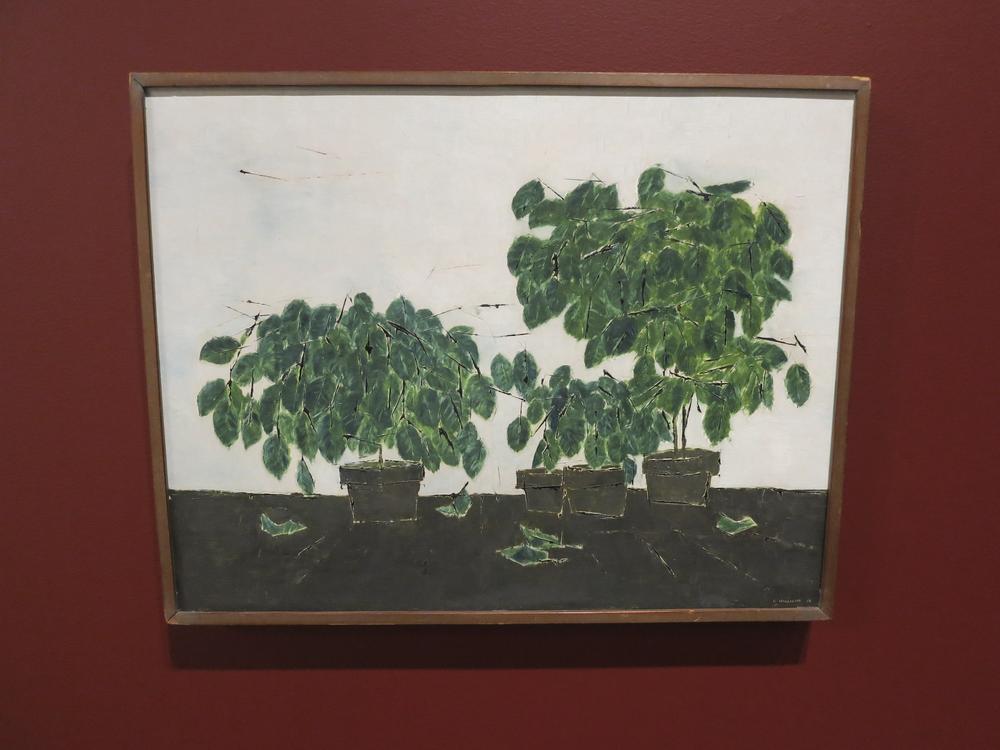


Art.
Perhaps art, this three-letter word, is the greatest example of the void. Not the void of melancholia, that of absolute loss, but the void as a consequence of creative destruction for the sake of reconstruction.
For art never sits, never rests in its own achievement, never congratulates itself to the point of placation. Art is never finished, never complete – it burns to invent, to recreate, to give birth to new possibilities, to resist rigidity and the possibility of stasis. And in order to invent, art must critique and destroy that safe familiar framework that already exists. And so it could be argued that arts only imperative is to invent an imperative.
You create a nothing in order to create a something. Duchampian urinal.
Arts unique exceptionalism, that excuses it from everyday obligations, permits it to be audacious, sensational and literally ground-breaking.
Perhaps art, this three-letter word, is the greatest example of the void. Not the void of melancholia, that of absolute loss, but the void as a consequence of creative destruction for the sake of reconstruction.
For art never sits, never rests in its own achievement, never congratulates itself to the point of placation. Art is never finished, never complete – it burns to invent, to recreate, to give birth to new possibilities, to resist rigidity and the possibility of stasis. And in order to invent, art must critique and destroy that safe familiar framework that already exists. And so it could be argued that arts only imperative is to invent an imperative.
You create a nothing in order to create a something. Duchampian urinal.
Arts unique exceptionalism, that excuses it from everyday obligations, permits it to be audacious, sensational and literally ground-breaking.
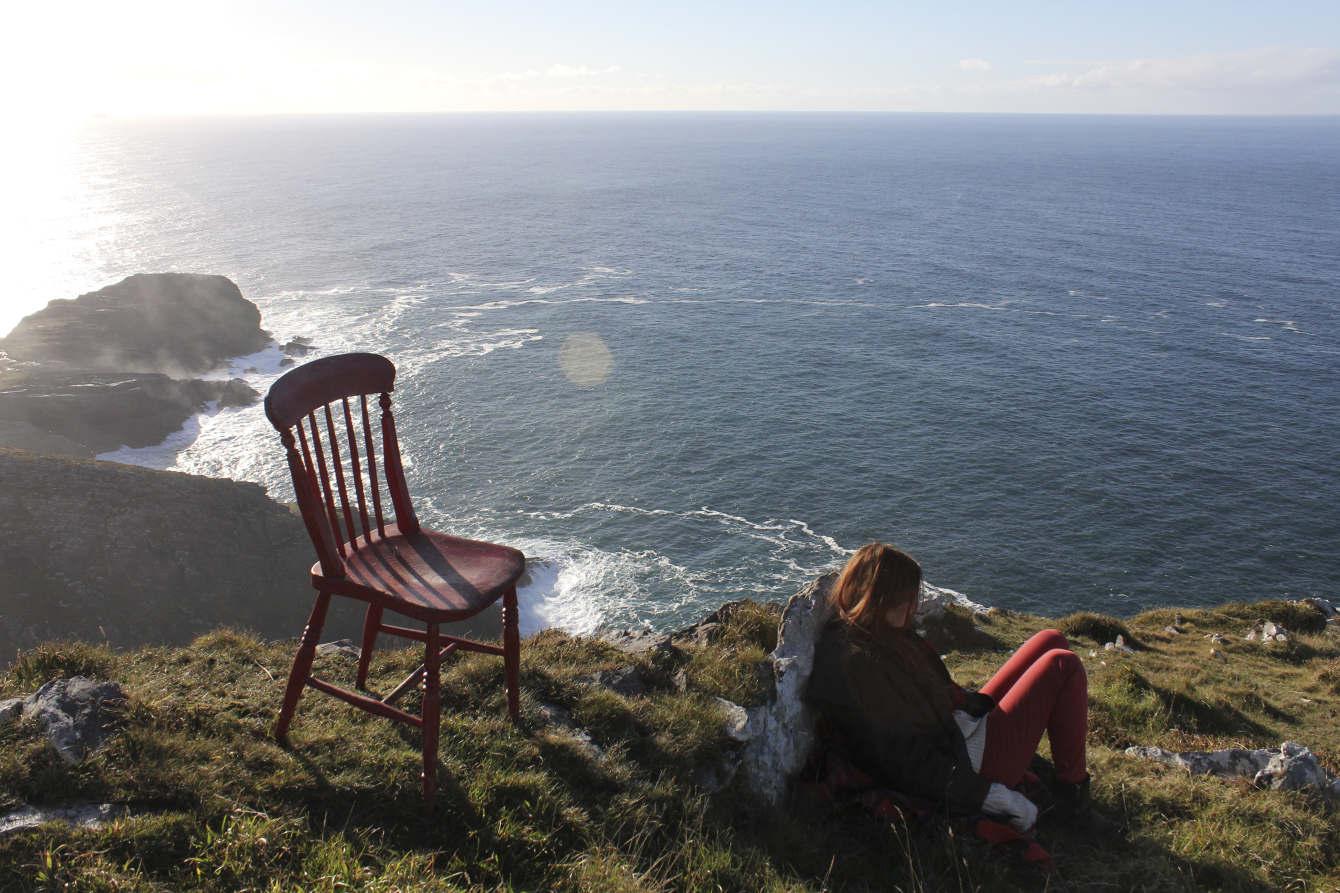

We must bare this creative destruction in mind when we consider the conceptual implications of The Psychosculpture. The work uses the psychoanalytic format of a talk therapy session in order to create the possibility for art to (im)materialize. Environments reminiscent of a therapists office are created with visual prompts and seated positions for both the ‘analyst’ and ‘analysand’ for the Psychosculpture action to play out. Ostensibly this may appear to be psychoanalysis - but it is not. The Psychosculpture borrows, or rather steals, tools from the field of psychoanalysis in order to reinvent this discipline and create something new. Not a psychoanalyst, but an artist, nor is it practicing psychoanalysis, rather practicing art. And because this research is firmly placed within the terrain of art, it may, as all good artists do, steal, use and disuse concepts at will.
The Psychosculpture draws from and experiments with different established disciplines in order to create something new. The fact that experimentation is fundamental to the practice, and integrally, to the practice of art, echoes that of scientific endeavor, however it could be argued that the borders of experimentation are much less controlled and defined within art. Art and Science both work at the precipice of progress – pushing at the frontiers of the unknown in order to discover the new. Art’s lack of official obligation in scientific progress guarantees the result of research less compromised by controlled borders of conduct that are present in other disciplines, such as science. This emancipated realm of art does not, however, mean that its practice is without structure or order, but rather that its structure may be constructed and deconstructed more freely and sporadically than other fields of research.
The Psychosculpture draws from and experiments with different established disciplines in order to create something new. The fact that experimentation is fundamental to the practice, and integrally, to the practice of art, echoes that of scientific endeavor, however it could be argued that the borders of experimentation are much less controlled and defined within art. Art and Science both work at the precipice of progress – pushing at the frontiers of the unknown in order to discover the new. Art’s lack of official obligation in scientific progress guarantees the result of research less compromised by controlled borders of conduct that are present in other disciplines, such as science. This emancipated realm of art does not, however, mean that its practice is without structure or order, but rather that its structure may be constructed and deconstructed more freely and sporadically than other fields of research.

This malleability is, of course, endemic to all experimental practice but the difference with experiments enacted within an artistic discipline is that the modification of variables is more impromptu, eclectic and able to occur without vigorous defence. Perhaps it is arts alternative status and supposed lack of responsibility in economic functionality, evolutive education and socio-political progress that permits this heightened reign of free conduct and therefore production of wild and radically new results.
Psychosculpture appropriates psychoanalysis for the discipline of art, which is particularly interesting in relation to the historical classification of psychoanalysis and its potential futuristic reinterpretation. In the early nineteenth century Sigmund Freud began researching into the idea of the unconscious, a previously neglected component to psychiatry, whilst working as a neurologist at a children’s hospital in Vienna. Firmly placed within medicine and neurology Freud was determined that these new findings, which he coined psychoanalysis, be accepted as a science and awarded the accolade and weight that scientific research harbours. At this point psychoanalysis was foetal in its stage of development and therefore shocking in content and threateningly new. By classifying psychoanalysis as a science before its scientific factuality was validated aided Freud in his struggle to convince society of his findings, both during his lifetime and posthumously.
Although this pre-supposition of psychoanalysis as a science was a
useful tool in rhetoric it simultaneously castrated this new idea’s potential. The qualification of psychoanalysis as a science helped to provide this idea with social confidence, but at the same time it also put an additional pressure on it to legitimize its findings before it possessed the necessary psychological tools to do this. Perhaps if Freud had classified psychoanalysis as an art, which possesses the potential to transgress inhibitory controls resident in other research fields, his research might have endured for longer.
In the 1950’s Jacques Lacan returned to Freud and began re-appropriating psychoanalysis with Hegelian philosophy and structural linguistics. Lacan’s reinterpretation of psychoanalysis became an interpretative composite of different critical thought, which in opposition to Freud, he outwardly encouraged as a strategy to elude categorization. This can be observed in his ruminations on posthumous categorization, which he spoke openly about in one of his teaching sessions:
Freud couldn’t resist the temptation of ‘nobility’ through scientific classification, Lacan emancipated psychoanalysis from its inhibitive classification and now the Psychosculpture reclassifies it but this time as precisely indeterminate – as pure experimentation. This act simultaneously classifies and declassifies psychoanalysis because of arts tenacity towards the unknown. Here psychoanalysis benefits from this (temporary) re-categorization, but so does art, as it is placed within the terrain of research and lent the respect synonymous with a doctor’s office and the aesthetic of mastery.
Psychosculpture appropriates psychoanalysis for the discipline of art, which is particularly interesting in relation to the historical classification of psychoanalysis and its potential futuristic reinterpretation. In the early nineteenth century Sigmund Freud began researching into the idea of the unconscious, a previously neglected component to psychiatry, whilst working as a neurologist at a children’s hospital in Vienna. Firmly placed within medicine and neurology Freud was determined that these new findings, which he coined psychoanalysis, be accepted as a science and awarded the accolade and weight that scientific research harbours. At this point psychoanalysis was foetal in its stage of development and therefore shocking in content and threateningly new. By classifying psychoanalysis as a science before its scientific factuality was validated aided Freud in his struggle to convince society of his findings, both during his lifetime and posthumously.
Although this pre-supposition of psychoanalysis as a science was a
useful tool in rhetoric it simultaneously castrated this new idea’s potential. The qualification of psychoanalysis as a science helped to provide this idea with social confidence, but at the same time it also put an additional pressure on it to legitimize its findings before it possessed the necessary psychological tools to do this. Perhaps if Freud had classified psychoanalysis as an art, which possesses the potential to transgress inhibitory controls resident in other research fields, his research might have endured for longer.
In the 1950’s Jacques Lacan returned to Freud and began re-appropriating psychoanalysis with Hegelian philosophy and structural linguistics. Lacan’s reinterpretation of psychoanalysis became an interpretative composite of different critical thought, which in opposition to Freud, he outwardly encouraged as a strategy to elude categorization. This can be observed in his ruminations on posthumous categorization, which he spoke openly about in one of his teaching sessions:
“When you have been dead long enough, you find yourself being summed up in three lines of a textbook – though where I am concerned, I’m not too sure which textbook it will be” (Jacques Lacan)
Freud couldn’t resist the temptation of ‘nobility’ through scientific classification, Lacan emancipated psychoanalysis from its inhibitive classification and now the Psychosculpture reclassifies it but this time as precisely indeterminate – as pure experimentation. This act simultaneously classifies and declassifies psychoanalysis because of arts tenacity towards the unknown. Here psychoanalysis benefits from this (temporary) re-categorization, but so does art, as it is placed within the terrain of research and lent the respect synonymous with a doctor’s office and the aesthetic of mastery.




The position as an artist not a ‘trained’ psychoanalyst practicing psychosculpture-neo-psychoanalysis is very revealing in relation to the dynamic at play between the analytic master (the one who is supposed to know) and analysand (the one who is not supposed to know). In psychoanalysis the analyst does not in fact possess the solution, not because he is bad at his job, but rather because he cannot possess the solution – no one can, for the solution is fictitious. In Lacanese the ‘solution’ is the ‘objet petit a’ - that certain little thing which drives and perpetuates desire, but which is actually eternally elsewhere and logistically impossible. This concealing of information in Lacanian psychoanalysis may sound intrinsically deceptive, however Lacan believed it vital that this information be withheld or deferred by the analyst for the session to function.
For if it were declared that the master signifiers masterfulness was in fact an illusion the analysand would not invest time or trust in the session and its inauguration would be impossible. It is only when the analysand comprehends that there is in fact no resolute answer, that analysis is not holistically remedial and that the analyst does not possess the remedial solution, that analysis has reached its aim, which Lacan termed ‘traversing the fantasy’. So ironically it is only when the analysand sees the fantasy as precisely a fantasy, that there is no hierarchical distinction between analysand and analyst in what is known, that analysis is successful.
Contrastingly in a psychosculptural session, my practicing symbolic significance, as the token master, is more ambiguous. Being an artist, rather than psychoanalyst, the standard model of hierarchal role-play is inherently usurped. As an artist, rather than a ‘doctor’, the traditional master position is aligned more with the position of an amateur, or more specifically a dilletante:
In a way psychosculptures skip over the preliminary steps Lacan performed through psychoanalysis and start at the end of a Lacanian psychoanalytic session where the patient is partially aware of the hierarchical illusion at stake in analysis. Even as an artist there is a play made in the role of the totem master who does not know, not because he does not know but because he cannot know – for no one can because it is precisely un-knowable. By asserting this status as an artist not psychoanalyst practicing pseudo-psychoanalysis, this exposure ensures that the work situates itself within the realm of research and experimentation, rather than medicine.
For if it were declared that the master signifiers masterfulness was in fact an illusion the analysand would not invest time or trust in the session and its inauguration would be impossible. It is only when the analysand comprehends that there is in fact no resolute answer, that analysis is not holistically remedial and that the analyst does not possess the remedial solution, that analysis has reached its aim, which Lacan termed ‘traversing the fantasy’. So ironically it is only when the analysand sees the fantasy as precisely a fantasy, that there is no hierarchical distinction between analysand and analyst in what is known, that analysis is successful.
Contrastingly in a psychosculptural session, my practicing symbolic significance, as the token master, is more ambiguous. Being an artist, rather than psychoanalyst, the standard model of hierarchal role-play is inherently usurped. As an artist, rather than a ‘doctor’, the traditional master position is aligned more with the position of an amateur, or more specifically a dilletante:
“The amateur harbors a desire to become professional, or measures its success according to a framework defined by a professional field. The dilettante, on the other hand, is not seeking expertise per se but rather specificity from where one can ask fundamental questions”
In a way psychosculptures skip over the preliminary steps Lacan performed through psychoanalysis and start at the end of a Lacanian psychoanalytic session where the patient is partially aware of the hierarchical illusion at stake in analysis. Even as an artist there is a play made in the role of the totem master who does not know, not because he does not know but because he cannot know – for no one can because it is precisely un-knowable. By asserting this status as an artist not psychoanalyst practicing pseudo-psychoanalysis, this exposure ensures that the work situates itself within the realm of research and experimentation, rather than medicine.
The revelation of practicing completely within the terrain of the unknown is ironically also intrinsically the analysands position in Lacanian psychoanalysis. Because of the dilletante role the master signifier is able to oscillate between participants on a platform where mutual and rhizomatic research (or art) is produced collectively. The artist and whoever is participating, make discoveries together and collectively produce the work and inherently remove individual authorship; “They are coming to produce my work / I am producing their work / work is created”. Here Psychosculpture can be seen as a platform for collaboration, or collective practice, where the hierarchical structure is not removed completely but made constitutively flexible.
In effect the ‘art moment’ manifests immaterially in the dialogue; “the therapeutic dialogue produced between the two participants is the work”. By providing a platform, the opening offers a possibility for an ‘art moment’ to occur through participatory interaction. In psychosculptures it is explicitly the people, not the material, which make the work, making participation inherently requisite to this work. Here it is important to outline exactly what is meant by participation. The Psychosculpture is in fact not in the Nicolas Bourridian territory of participatory art, but rather more echoic of the Beuysian notion of social sculpture. Although participation is fundamental to the operation of this practice, it is here not the work, per se. The work is not exclusively about social inclusion, opening up the terrain of art to the general public and making a playground out of artistic endeavour, a la Bourriaud, but rather participatory in that the work cannot function without participation. Psychosculpture cannot be consumed or participated by simply anyone, for whoever engages in the process must participate with cause and have something at stake or something to offer. Without this commitment the work is impossible. The practice is fundamentally social and adopts the Beuysian notion of social sculpture pushing it further in immateriality. in the end this work can also be seen as an analysis of what it means to be an artist and what a piece of art is.
In effect the ‘art moment’ manifests immaterially in the dialogue; “the therapeutic dialogue produced between the two participants is the work”. By providing a platform, the opening offers a possibility for an ‘art moment’ to occur through participatory interaction. In psychosculptures it is explicitly the people, not the material, which make the work, making participation inherently requisite to this work. Here it is important to outline exactly what is meant by participation. The Psychosculpture is in fact not in the Nicolas Bourridian territory of participatory art, but rather more echoic of the Beuysian notion of social sculpture. Although participation is fundamental to the operation of this practice, it is here not the work, per se. The work is not exclusively about social inclusion, opening up the terrain of art to the general public and making a playground out of artistic endeavour, a la Bourriaud, but rather participatory in that the work cannot function without participation. Psychosculpture cannot be consumed or participated by simply anyone, for whoever engages in the process must participate with cause and have something at stake or something to offer. Without this commitment the work is impossible. The practice is fundamentally social and adopts the Beuysian notion of social sculpture pushing it further in immateriality. in the end this work can also be seen as an analysis of what it means to be an artist and what a piece of art is.
